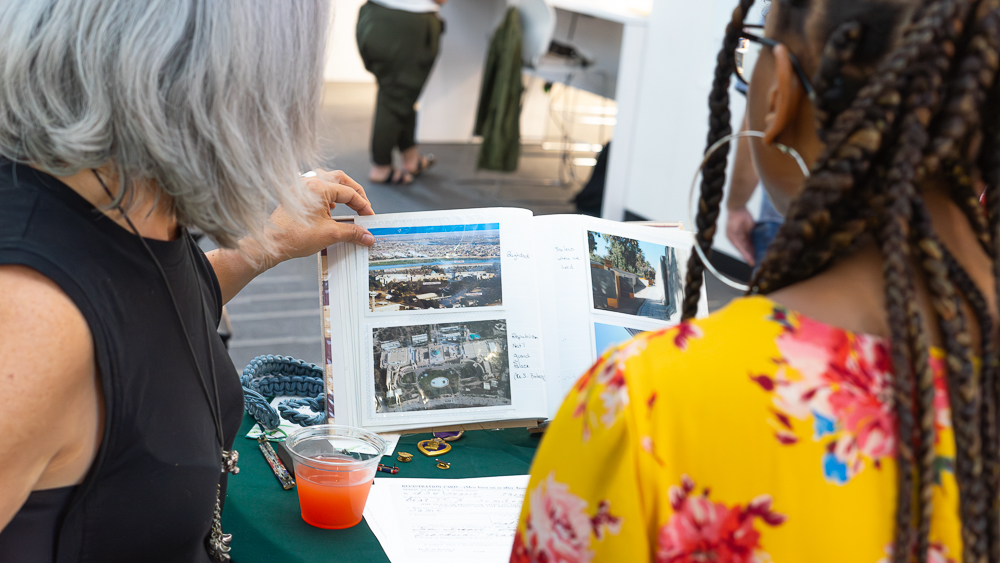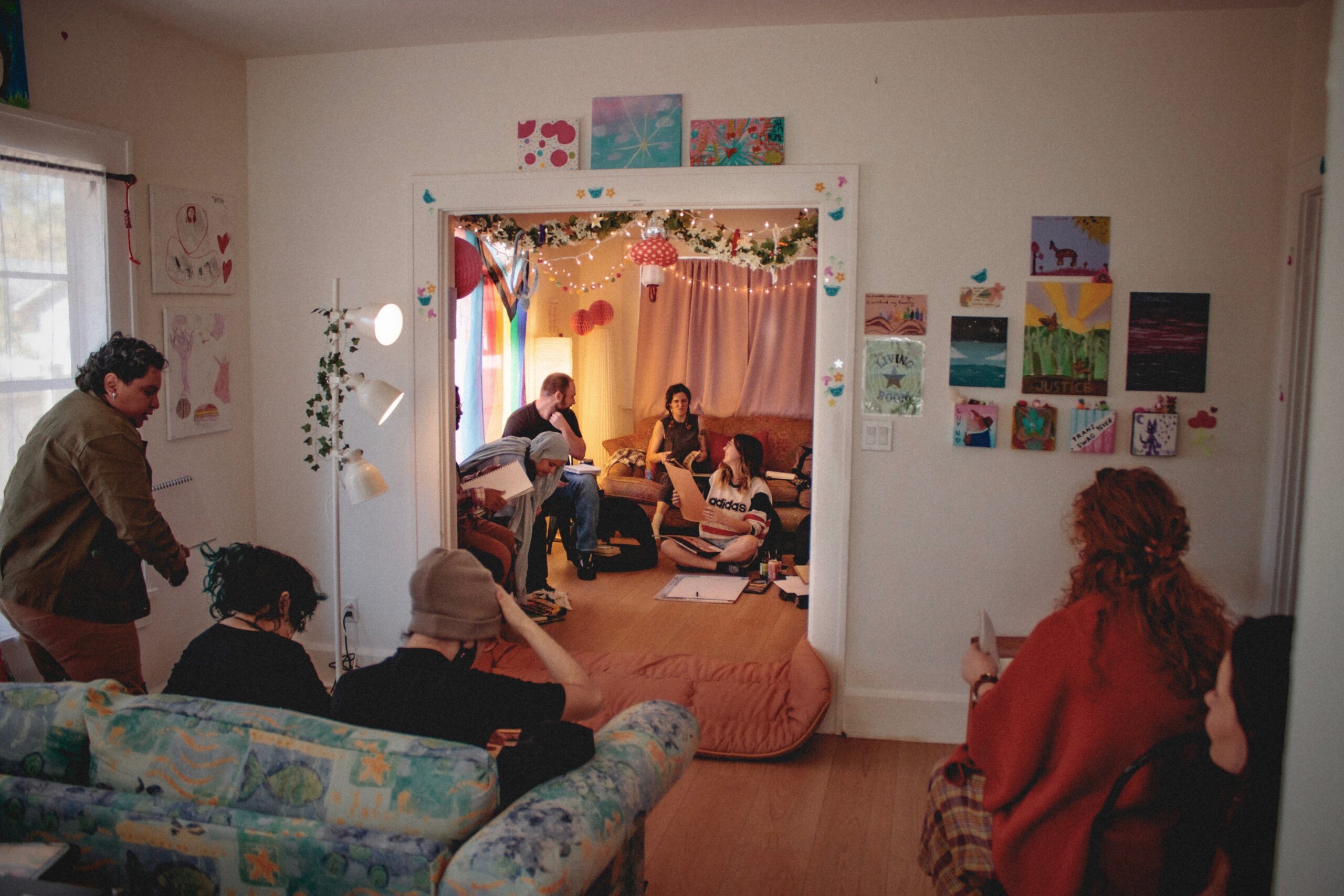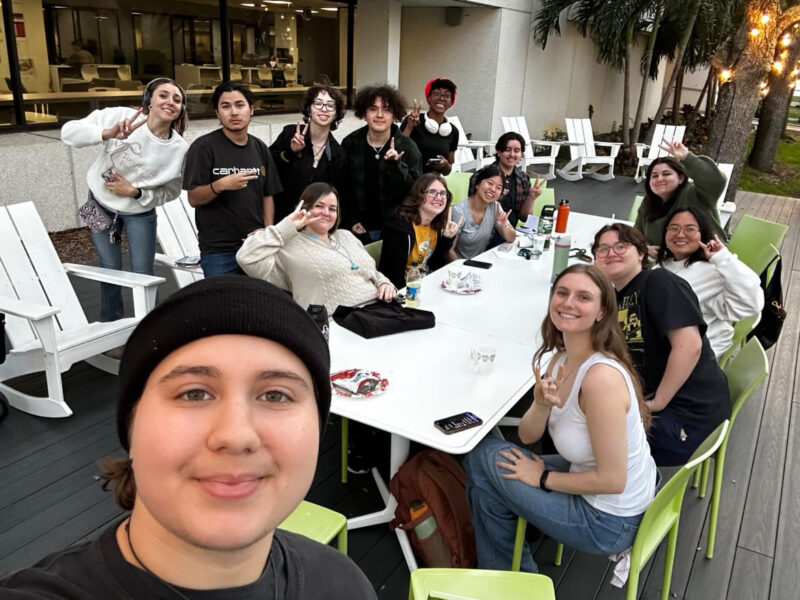Photo by Jeffery Caicedo | The Crow’s Nest.
By Jeffery Caicedo
The University of South Florida’s St. Petersburg Department of History held its first History Harvest, giving the community a chance to shine a light on their personal treasures. Filled with cherished artifacts and heartwarming tales, residents brought letters, photographs, art and various historical objects, collaborating with history students to digitally document their significance.
At the event, community members Julie and Josie Rocco shared an important piece from their father’s past: a telegram from the Western Union, given in tribute to their late father’s tenure at the company. The family wished for insight into the father’s role and his contributions to the telecommunications giant.
“It is an opportunity to better understand a man we loved, came home to and we go visit every once and a while, but what did he do? What is his contribution, his legacy?” Julie Rocco said.
Captivated by the object and its backstory, Drew Jackson, a student majoring in psychology and history, expressed his intentions to investigate the history of Western Union, specifically between 1961 and 1988, to understand the company’s internal communication practices and to better understand their father’s contributions.

Jackson’s interest in the telegram isn’t just academic. For him, it’s a challenge, given his limited experience with corporate history. “The telegram itself is challenging you. It says ‘I am historically significant. It’s your loss if you can’t find out why,'” Jackson said.
The father’s passionate role as a union member at the Western Union, where he worked for 27 years, adds another layer of intrigue. His commitment to the company was evident, even participating in strikes. For the family, understanding this corporate and union history could provide valuable context to their father’s life and legacy.
“We are really grateful that Drew selected this object to pursue interest from a historical context.” Josie Rocco said.
Kylie Dumas, a student majoring in history, shared her own experience from the “History Harvest.” Her interviewee, a history professor, brought in his family’s naturalization papers from Ellis Island, tracing back to South Italy. This resonated deeply with Dumas, who also had family ties from that region.
“It’s very interesting to see how people came, what they had to go through there,” Caleb said, reflecting on the papers. “They were completely vulnerable in a new country, trying to make their mark.”

For Dumas, knowing the many purposes and journeys of these immigrants provided a factor to the overall story. She noted, “his family also came from South Italy, and not many people came from Italy. Researching the people that came from different parts of Italy could be quite interesting.”
The event was not only about exploring historical artifacts and memories but also about honing students’ research, interviewing, and social skills, enriching their academic experience.
Erin Mauldin, the John Hope Franklin Professor of Southern History at USF St. Petersburg, designed this event to bridge the gap between students and history, and to enhance the department’s visibility within the community. “We wanted to connect students with the stuff of history,” Malden said.
The hands-on experience allowed students to hone real-life skills, from taking oral histories to handling archival materials. With about 30 submissions, each of the 15 students chose a unique historical artifact, covering diverse topics from World War II’s Normandy invasion to local Floridian events.
Malden credited the success of this inaugural event to the support of Caryn Nesmith, director of community relations, and USF’s community approach. “Everybody has a story in their house, and we’re trying to uncover those stories,” she said, emphasizing the event’s goal of connecting past narratives to students’ research projects.



